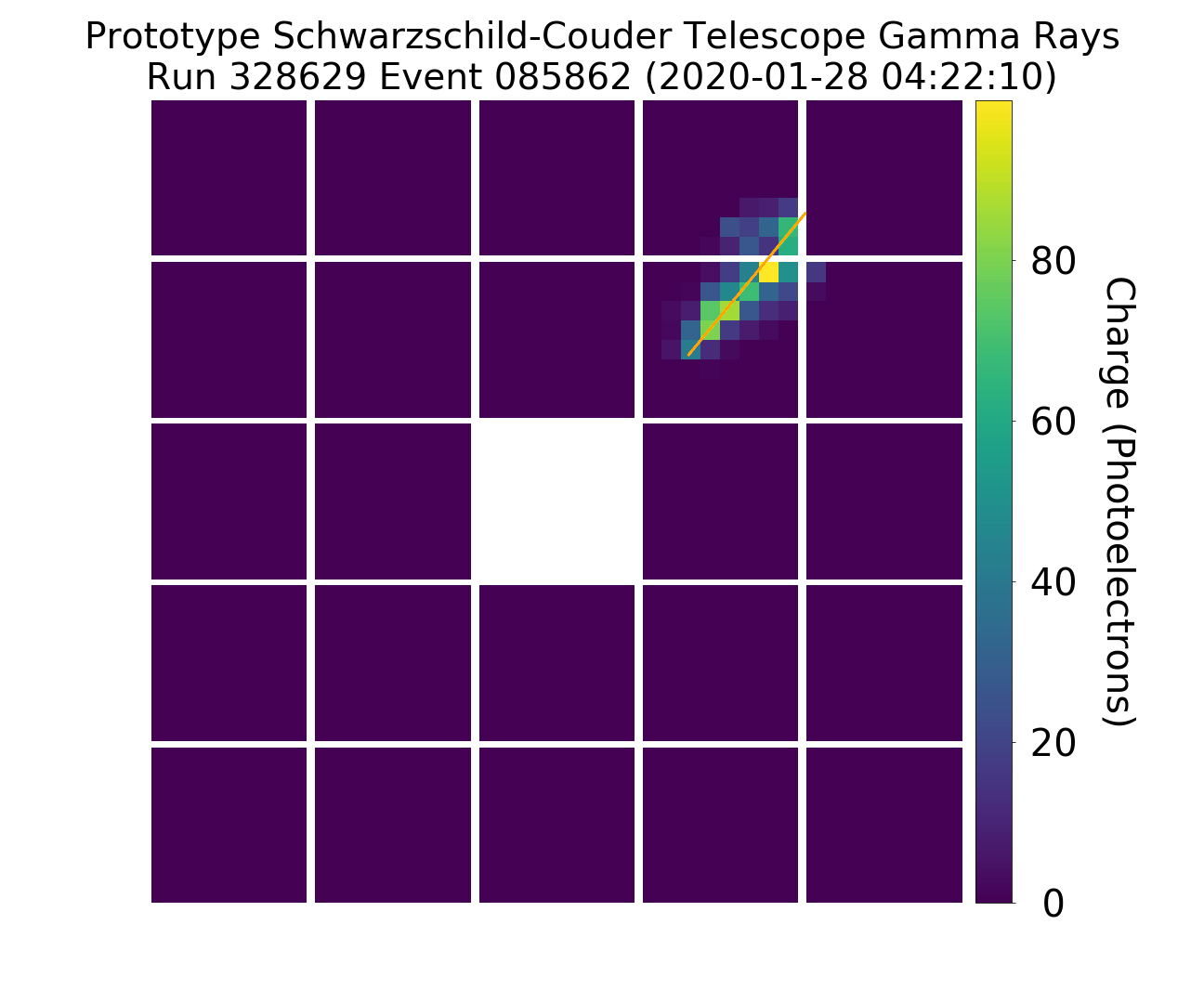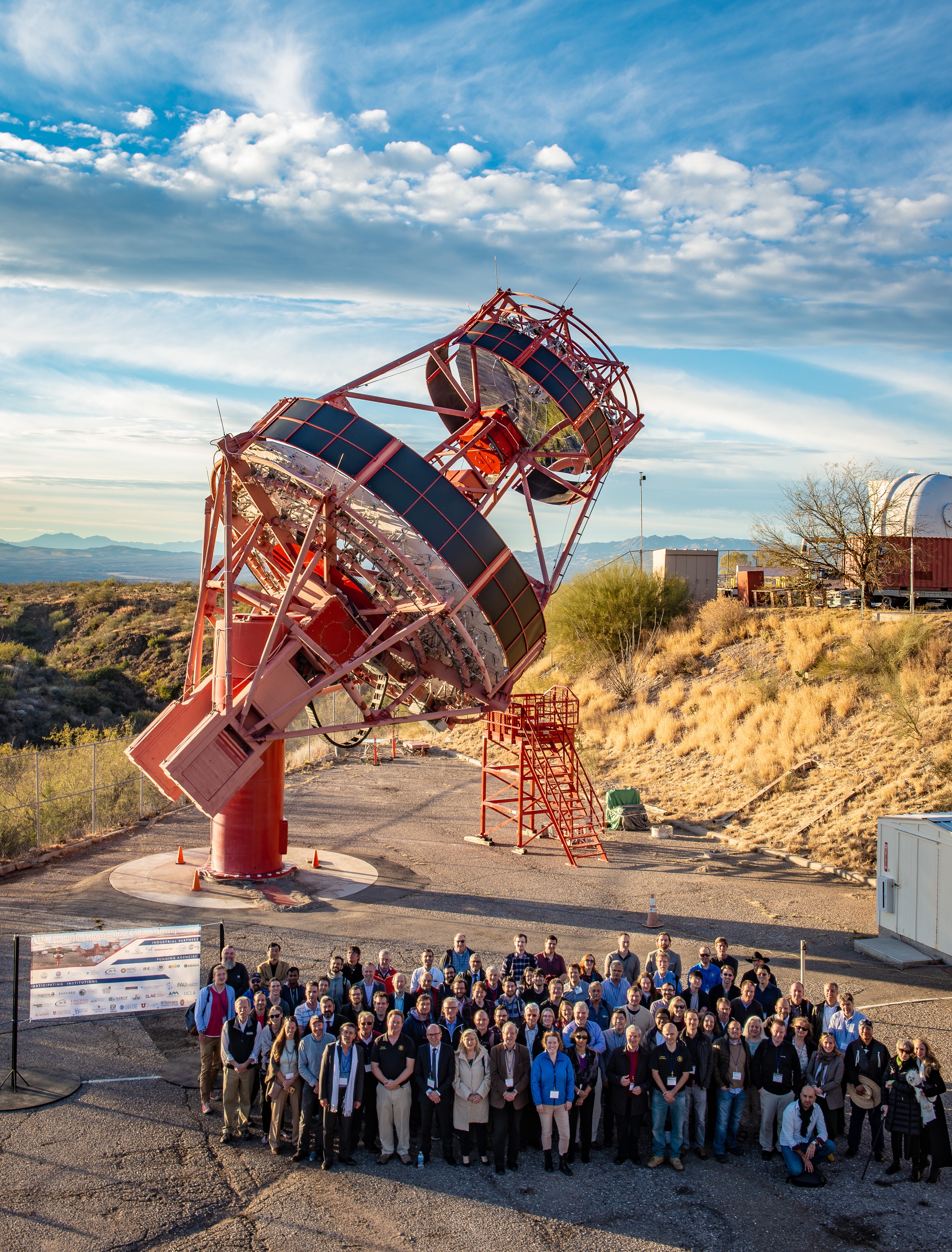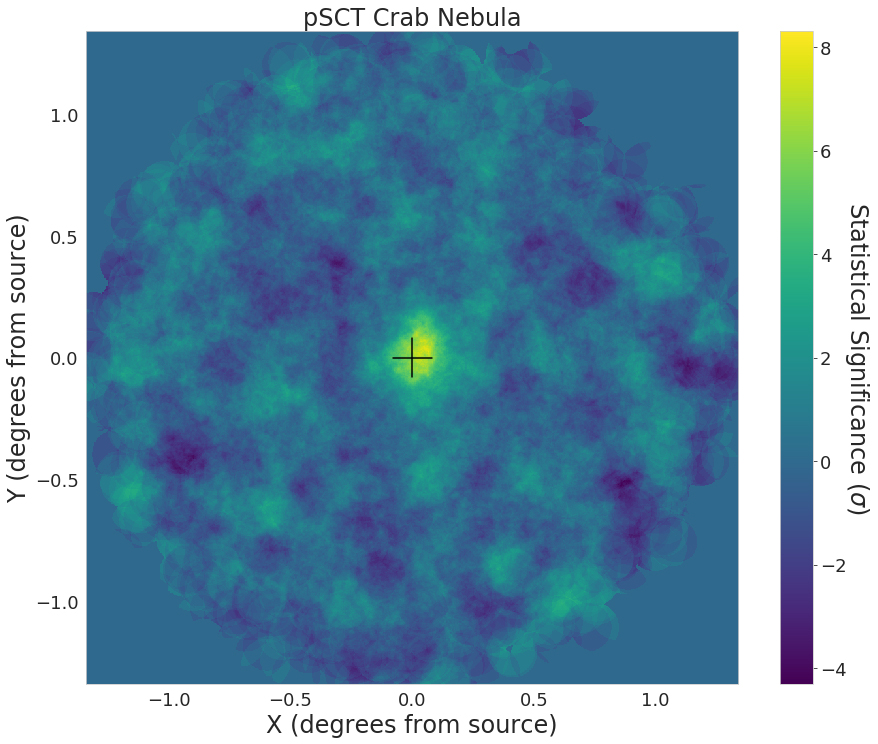Image List
-

Histogram showing the detection of gamma-ray events from the Crab Nebula, with N OFF representing background and N ON representing a combination of signal and background.
CTA/SCT consortium -

Animation showing 18 gamma-ray events from the Crab Nebula detected with the pSCT telescope.
CTA/SCT consortium -

Guests of the pSCT inauguration in January 2019 gather in front of the telescope.
Deivid Ribeiro, Columbia University -

Sky map recorded with the pSCT over a region centered on the Crab Nebula, detection of the Crab Nebula marked at center.
CTA/SCT consortium -

Located at the Fred Lawrence Whipple Observatory in Amado, AZ, the pSCT detected gamma-ray showers from the Crab Nebula in early 2020, proving the viability of the telescope design for gamma-ray astrophysics.
Amy C. Oliver, Center for Astrophysics | Harvard & Smithsonian